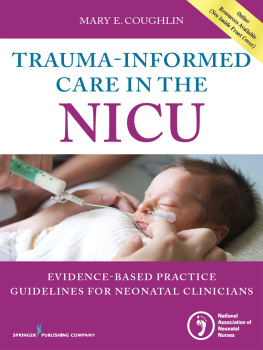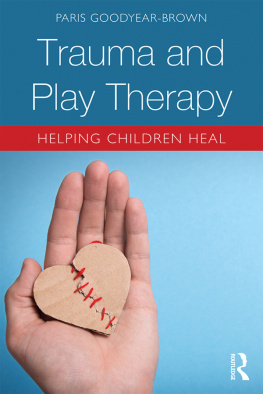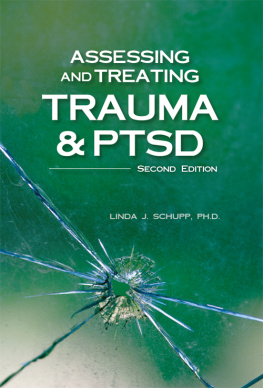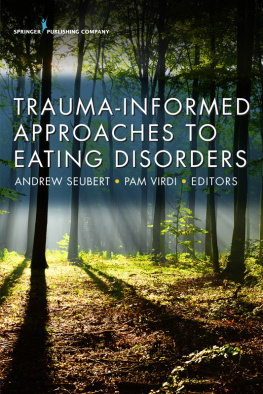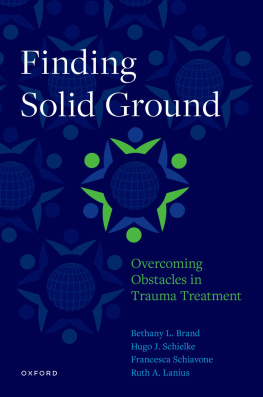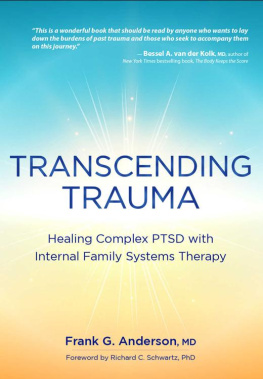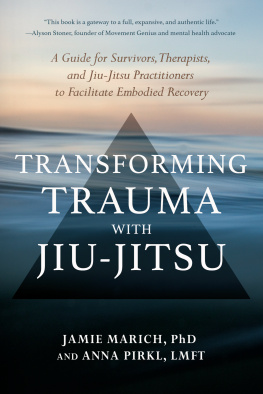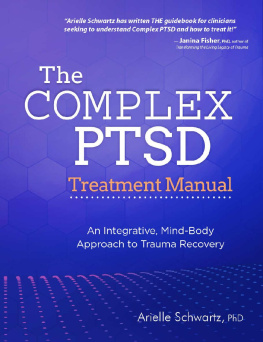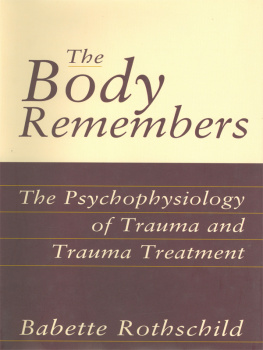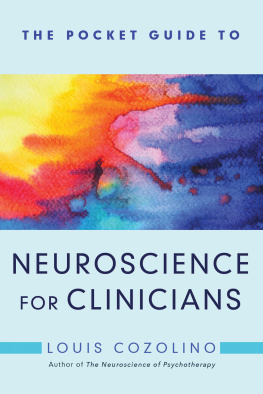T RAUMA C OMPETENCY
A C LINICIAN S G UIDE
L INDA A. C URRAN
BCPC, LPC, CACD, CCDP-D

Copyright 2010 Linda Curran
Published by:
PESI, LLC
PO Box 1000
3839 White Avenue
Eau Claire, Wisconsin 54702
Printed in the United States of America
ISBN: 978-0-9820398-8-5
PESI, LLC strives to obtain knowledgeable authors and faculty for its publications and seminars. The clinical recommendations contained herein are the result of extensive author research and review. Obviously, any recommendations for patient care must be held up against individual circumstances at hand. To the best of our knowledge any recommendations included by the author or faculty reflect currently accepted practice. However, these recommendations cannot be considered universal and complete. The authors and publisher repudiate any responsibility for unfavorable effects that result from information, recommendations, undetected omissions or errors. Professionals using this publication should research other original sources of authority as well.
For information on this and other PESI manuals and audio recordings, please call 800-844-8260 or visit our website at www.pesi.com

DEDICATION
In loving memory of both
Elizabeth A. Curran and Gary S. Coladonato
I miss you, Mom.
Father Jerry asks that you say a prayer
... for a boy who couldnt run as fast as I could.

With much gratitude, to all of my clients for allowing me to bear witness to your unparalleled courage and humanity. As always, it is my privilege
To the icons in this field and my many mentors. Special thanks to Dr. van der Kolk, Dr. Porges, Dr. Levine, Babette, Rockstar, Bob, Mary Lou, Philip, David, Debbie, Jo and Carol.
To Jeff, for my corrective experience with adults.
And, finally, to David, Jamie and Jen for your love, patience, support and encouragement. Without that, no book... no nothin.

ABOUT THE AUTHOR

President of Integrative Trauma Treatment in Havertown, PA, Linda provides clients an integrative approach to trauma. As an individual and group psychotherapist, she works with simple and complex PTSD in adolescent and adult populations including clients with co-occurring and eating disorders, sexual trauma, self-injury, and Axis II diagnoses.
Linda holds advanced degrees in both clinical psychology and public health. A Board-Certified, Licensed Professional Counselor; Certified Addiction Counselor Diplomate; Certified Co-Occurring Disorders Professional Diplomate; Certified Gestalt Therapist; Certified Hypnotherapist; and Level II-trained EMDR practitioner, Linda is a regional and international speaker on the treatment of trauma. She has developed, produced, and presents multi-media workshops on all aspects of psychological trauma. Linda continues to advocate for accessible, coherent, integrative treatment for all those affected by trauma.
TABLE OF CONTENTS

INTRODUCTION
Since nothing written on the subject of trauma would be complete without a mention of Abram Kardiner, here it is: After the Second World War, American psychiatrist, Kardiner re-introduced the concept of traumatic neurosis to psychoanalytic theory. Unlike his contemporaries, he recognized traumatic neurosis not as a conflictual illness, but as the result of a psychological defensive maneuver used in warding off trauma. He warned that the cost of such a maneuver might well be the destruction of the victims adaptive capacity in the future.
Traumatic neurosis; a new name for an old condition. You may recognize it by its prior aliases. When it was a result of war, it was dubbed Shell Shock, Battle Fatigue and Operational Exhaustion. As a result of sexual assault or domestic violence, it was identified as Rape Trauma Syndrome and Battered Women Syndrome, respectively. As a result of childhood sexual abuse, it was labeled Hysteria. Describing the condition, trauma expert Peter Levine writes,... it is the most avoided, ignored, belittled, denied, misunderstood, and untreated cause of human suffering. The DSM-IV-TRs most recent designation for this long-standing cause of human suffering is Post Traumatic Stress Disorder (PTSD). My colleagues and I call it, psychiatrys redheaded stepchild-the troubled one, who wont leave home.
Regarding psychiatrys erratic interest in trauma, Kardiner lamented, these conditions [traumatic neurosis] are not subject to continuous study... but only to periodic efforts which cannot be categorized as very diligent. Since it is the collective that determines where its resources are directed, might it be that it is not only psychiatry but society in general that refuses to study trauma and its sequelae? In Trauma and Recovery, Herman writes,... When the traumatic events are of human design, those who bear witness are caught in the conflict between victim and perpetrator. It is morally impossible to remain neutral in this conflict. The bystander is forced to take sides. It is very tempting to take the side of the perpetrator. All the perpetrator asks is that the bystander do nothing... the victim, on the contrary, asks the bystander to share the burden of pain. The victim demands action, engagement and remembering.
Quick recap of those options: 1) Deliberate, intentional sharing of anothers pain, along with involuntary conscription into action, engagement, and remembering or 2) nothing at all.
Tough Call.
Since the continuous study of interpersonal trauma and its sequelae would undoubtedly inform us of the magnitude of suffering borne by a multitude of victims, is it possible that the majority of us are (consciously or unconsciously) complicit with the perpetrator? It appears that way to psychiatrist, Roland Summit, who refers to our shameful collective response as nescience or deliberate, beatific ignorance. In his admonition, he makes clear that we are not navely innocent; we are willfully ignorant. This hardly makes sense. Why would we human beings, herd animals, social creatures, living together cooperatively in a pro-social (at times, downright altruistic) communal setting intentionally ignore interpersonal trauma and remain complicit with its perpetrator? The short answer is fear. (And, unfortunately, heaping shame atop of fear doesnt mobilize us; it further paralyzes us.) In all probability, we are unwilling to investigate trauma at any length or in any depth because we assume that we lack the capacity to bear the findings that study would generate. The most startling and devastating finding would undoubtedly be traumas pervasiveness, i.e., the relative and absolute number of victims affected. These findings would necessarily remind us of the persistent threat to our own safety and the safety of those we love bringing into awareness the blatant reminder of our own frailty, helplessness, vulnerability, and prior victimization. And, who needs that?


